April, 2019
now browsing by month
Chinese tourists win, poor Cambodians lose with US$4 billion Hong Kong-backed casino in Phnom Penh
Chinese tourists win, poor Cambodians lose with US$4 billion Hong Kong-backed casino in Phnom Penh
- Tenants turfed out of Phnom Penh’s iconic low-income housing block, the White Building, were told it would be redeveloped to house Cambodians
- Instead, NagaCorp is planning a development the size of Marina Bay Sands in Singapore that it hopes will attract high-rolling Chinese gamblers
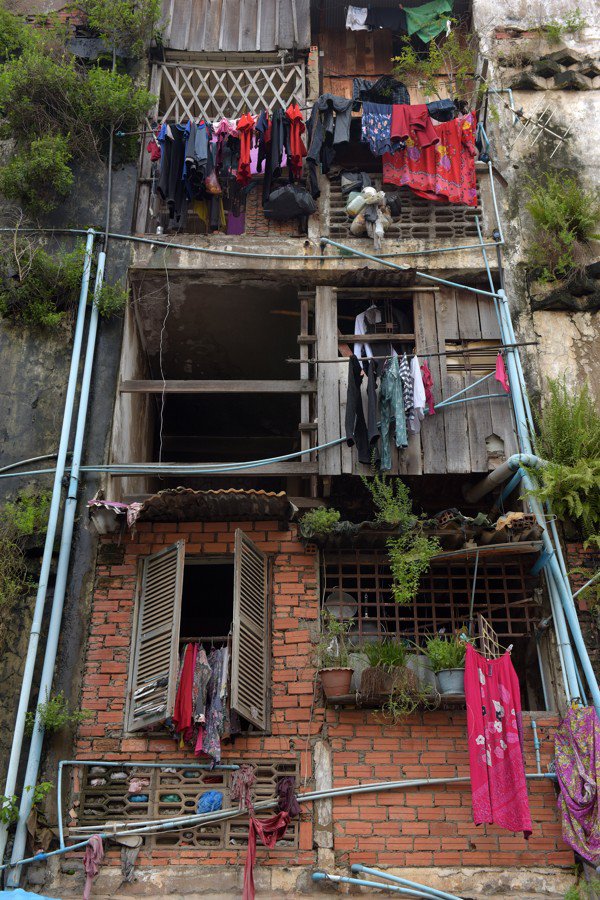
Andrew Nachemson Kong Meta , Published: 9:00am, 10 Apr, 2019
Op-Ed: This Week in Asia of SCM

Phnom Penh’s White Building, designed by Cambodian architect Vann Volyvann, before its destruction. File photoAn iconic Phnom Penh housing site known as the White Building is being turned into a multibillion-dollar casino development, as Cambodia woos Chinese tourists by catering to their penchant for gambling.Hong Kong-listed developer NagaCorp, controlled by Malaysian billionaire Chen Lip Keong, estimates it will spend US$3.8-US$4 billion on the Naga3 project, its third casino in the country, which will have hotels, condominium facilities and a 12-floor entertainment centre and outlet mall.NagaCorp’s deputy chairman Philip Lee told local media on Tuesday: “Naga3 is the single biggest private sector investment so far in the country and may be for years to come. It is about the same size as Marina Bay Sands in Singapore … which is the most expensive entertainment complex in the world.”

A Cambodian worker (R) looks through a window during demolition work at the White Building residential complex in Phnom Penh. Photo: AFPS
But the news has surprised and upset former residents of the low-income housing block and conservation activists, who had been under the impression the site was being redeveloped to house Cambodians.
Is Cambodia’s Koh Kong project for Chinese tourists – or China’s military?
Among them is Nhek Chantha, 67, who was turfed out of the White Building in 2017 and moved in with her children as she could not afford a new place.
“[The government] told such a big lie to us. It’s a very central place, they should renovate it and allow us to keep living there so it becomes a cultural site for people to see, but they think only about profit,” she said.
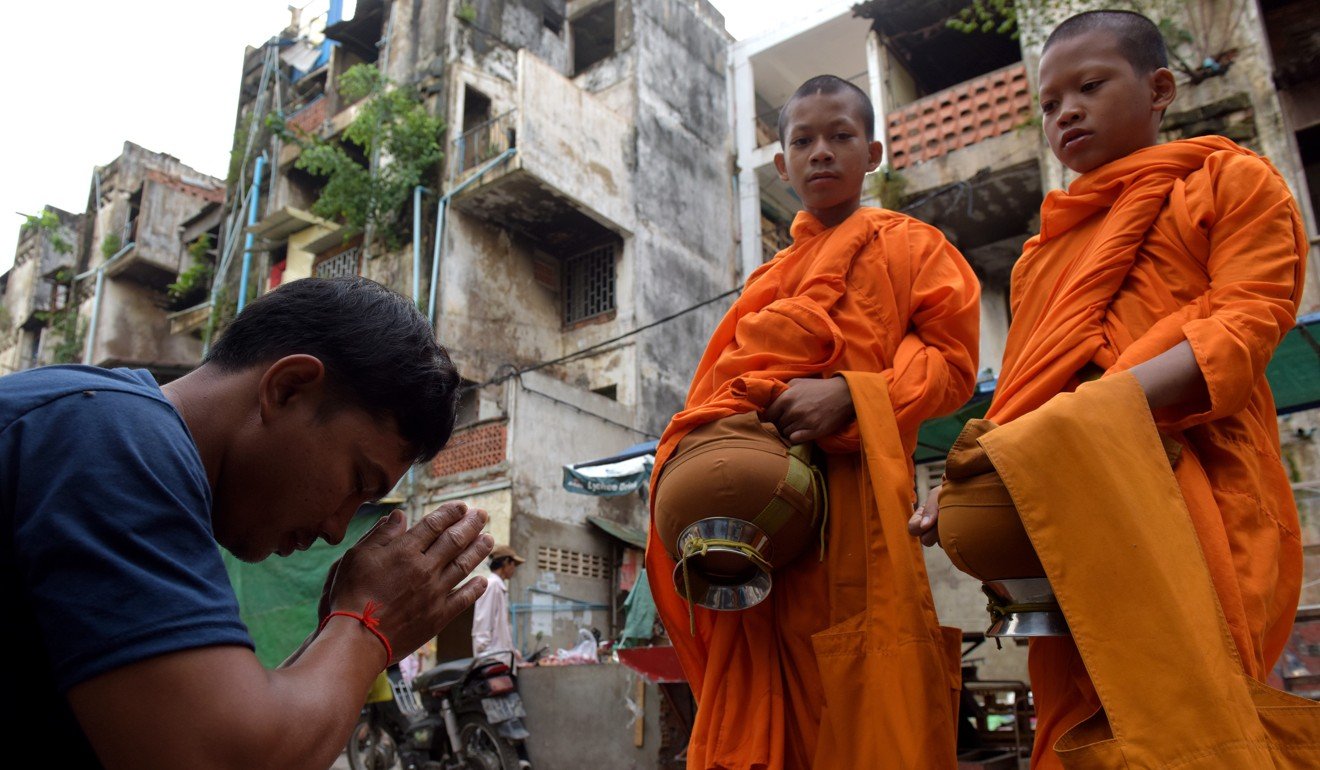
A Cambodian man prays to Buddhist monks at the residential complex known as the White Building before its demolition in Phnom Penh. Photo: AFPS
A Japanese company, Arakawa Co Ltd, was supposed to rebuild the landmark site and turn it into a 21-storey condominium block. Five of the floors were to be reserved for low-income housing that would go to the previous residents of the White Building and 12 floors would be used for private flats. Land Management Minister Chea Sophara in 2016 had asked Cambodians to “be patient while waiting for the new White Building to be finished in four years”.
‘They only go to Chinese shops’: why Cambodia’s influx of mainland tourists is causing tensions
Arakawa did not respond to requests for comment on Monday and Land Ministry spokesman Seng Lot said he did not know how or why the land was transferred to NagaCorp.
Constructed in 1963 as part of the Bassac River Front cultural complex and overseen by legendary architect Vann Molyvann, the White Building was, along with the rest of the city, evacuated in 1975 by the ultra-Maoist Khmer Rouge occupation which targeted artists and intellectuals.
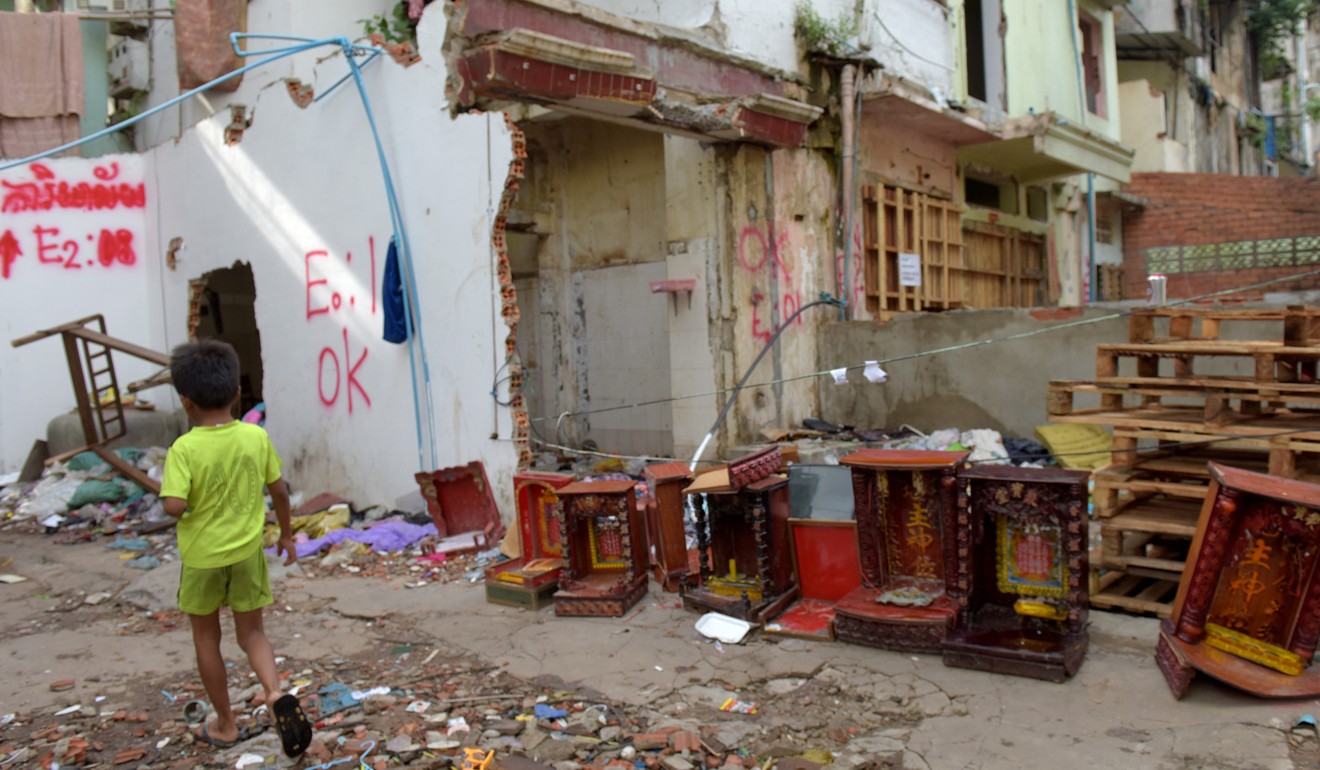
A Cambodian boy walks past spirit houses at the residential complex known as the White Building in Phnom Penh before its demolition. Photo: AFPS
After the regime fell in 1979, a mixed crowd including artists and musicians moved in, turning it into a colourful and close-knit, if sometimes seedy, community until the government demolished it two years ago, saying it was not structurally sound.
Read More …Posted in Culture, Economics, Education, Leadership, Politics, Researches, Social | Comments Off on Chinese tourists win, poor Cambodians lose with US$4 billion Hong Kong-backed casino in Phnom Penh
Tags: White Building
Cambodia: Free Opposition Leader From House Arrest
Cambodia: Free Opposition Leader From House Arrest
Immediately Drop Bogus Case Against Kem Sokha
Op-Ed: HRW

(New York) – Cambodian authorities should immediately and unconditionally release opposition party leader Kem Sokha from house arrest and drop the politically motivated criminal case against him, Human Rights Watch said today. Sokha, president of the Cambodian National Rescue Party (CNRP) at the time of his arrest, has been without his freedom for over 18 months.
On March 19, 2019, an investigating judge in Cambodia’s politically controlled courts rejected Sokha’s renewed request to drop the charges against him. The judge provided no update or additional information about the completion of his investigation and whether the case will be sent to trial.
“For a year and a half, Cambodian authorities have imprisoned Kem Sokha, first in a remote jail and now in his own home; denied him visits from colleagues, diplomats, and journalists; and conducted a baseless investigation with no end in sight,” said Brad Adams, Asia director. “The government should immediately end Sokha’s arbitrary detention and release him.”

On September 3, 2017, eight members of Prime Minister Hun Sen’s personal bodyguard unit and about 100 police officers arrested Sokha at his home in Phnom Penh. An investigating judge charged him with “colluding with foreigners” under article 443 of the Cambodian criminal code, which carries a maximum penalty of 30 years in prison. He was immediately stripped of his parliamentary immunity on the grounds that he was caught in the act of committing a crime, even though the purported evidence against him was a highly edited video of a speech he gave in 2013, more than four years earlier, in which he explained that his party had received advice from a United States-based NGO.
On June 5, 2018, the United Nations Working Group on Arbitrary Detention, a body of independent experts, declared Kem Sokha’s pretrial detention “arbitrary” and “politically motivated,” and said that Cambodian authorities should immediately release him.
Sokha spent a year in pretrial detention in a remote jail during which his health sharply deteriorated. On September 10, 2018, a judge ordered him released under highly restrictive conditions of judicial supervision that amount to house arrest. Under article 208 of Cambodia’s criminal procedure law, the investigating judge may only detain a felony suspect on legally justified grounds for up to 18 months. However, the judge has wide discretion to determine bail conditions, which allows for severe restrictions on the suspect’s freedom of movement and other rights. There is no provision in Cambodian law that allows for house arrest.
Read More …Posted in Leadership, Politics, Researches, Social | Comments Off on Cambodia: Free Opposition Leader From House Arrest
Tags: Free Kem Sokha
Saumura Tioulong: Aristocrat & Activist, East and West, Synergy & Individuality
Saumura Tioulong: Aristocrat & Activist, East and West, Synergy & Individuality
Op-Ed: FNF
Feature 03.04.2019
This author has personally heard Saumura, on more than a few occasions, say this statement or permutations of the same point—“The wife of Sam Rainsy?! I am Saumura.” Indeed, it is but just to refer to her as her own person whose solid credentials and competence in the fields of both politics and economics stand on their own merit.
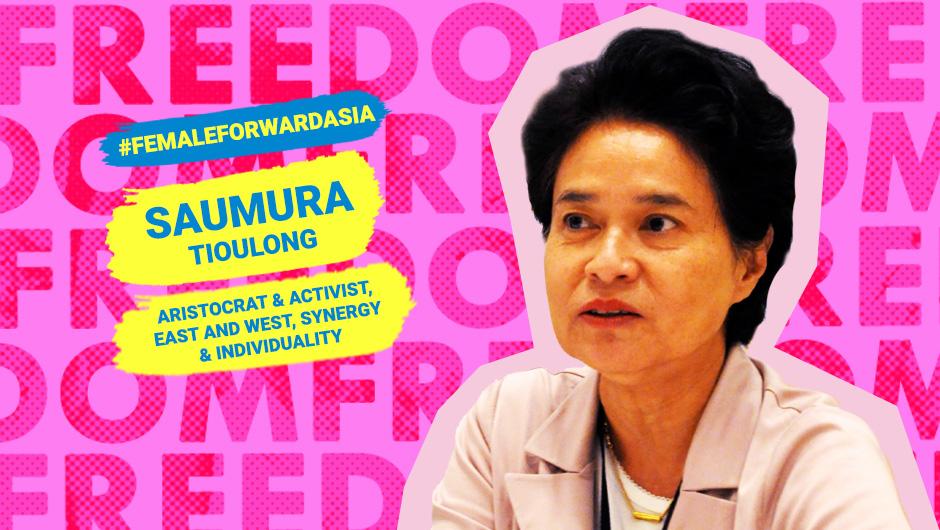
She is the daughter of a former prime minister, minister of three portfolios: foreign affairs, finance and education, and governor of Phnom Penh and other provinces; and the wife of the leader of the Cambodian opposition who was also a former finance minister after a successful career in Paris in business and finance. But make no mistake about it, she is her own person.

At the zenith of its power and glory, the Khmer Empire covered much of today’s Cambodia, Laos, Thailand and Vietnam. More than five hundred years later and after a century of French colonial rule, the genocidal reign of the Khmer Rouge reduced Cambodia to one of the poorest nations in the world.
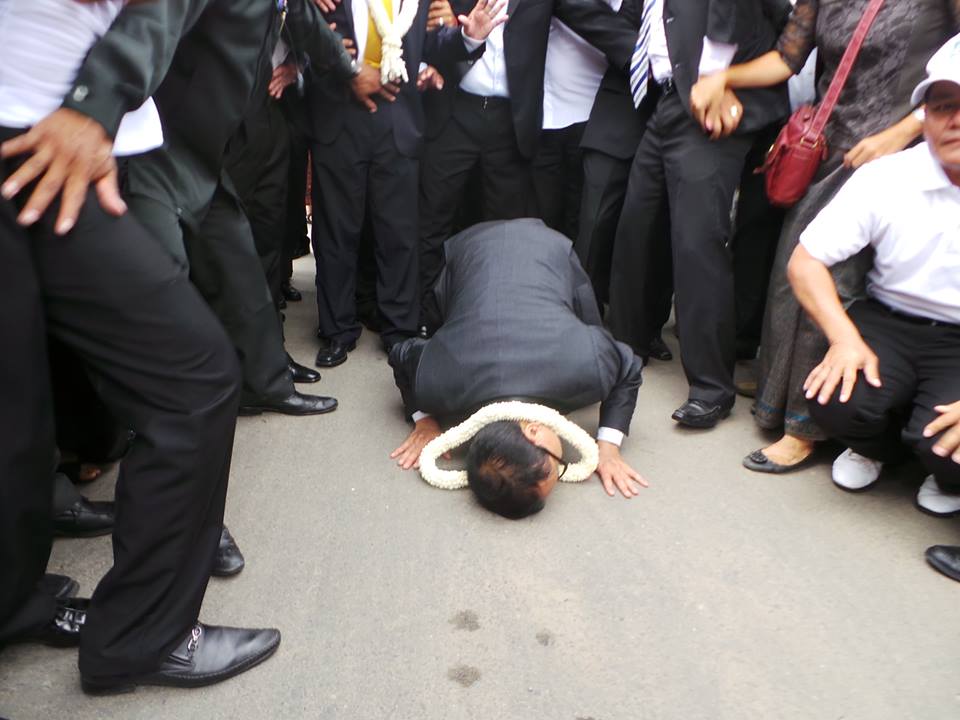
Imperial Khmer…Indochine. The ruins of the magnificent Angkor Wat in Siem Reap and the dilapidated maisons along Sisowath Quay in Phnom Penh are monuments of stone to Cambodia’s past—both as conquerors and conquered, both triumphant and tragic. In 1953, Cambodia gained independence from France. Though political turbulence continued, Cambodia in the fifties and the sixties held promise and possibilities. And Saumura’s father was part of that promise.
Then came the Killing Fields (1975 to 1979) that assaulted Cambodia with the relentless orgies of death and destruction of the infamous and murderous Khmer Rouge.
Saumura spent her primary education in Phnom Penh, Paris, Tokyo and Moscow; her high school at the Lycee Descartes in Phnom Penh. In 1969, Saumura went to France, her prominent family maintained a home in the center of Paris. She was still in her late teens when she left Cambodia, several years before the Khmer Rouge came to power. She returned only in 1992 with her husband, Rainsy. They have three children.
In France, she received the best education: a Political Science Diploma from the Institute of Political Science of Paris (1974) and an MBA from the prestigious Institut Européen d’Administration des Affaires (European Institute of Business Administration) or INSEAD (1980), acknowledged as one of the best business schools in the world, in its main campus in Fontainebleau.
With her sterling academic qualifications, she entered the world of high finance. Starting as Financial Analyst and Portfolio Manager at Banque Indosuez de Paris (1975- 1983), she became Managing Director of the French branch of Robert Fleming and Company, a Scottish investment bank specializing in securities management (1983-1988). And from 1988 to 1993, she was President and Chief Executive Officer of Mobiliere Conseil, a stock market advisory firm specializing in the Southeast Asian market.
Her being Asian and a woman were not obstacles not necessarily because the European and the men were open-minded but more so, because she did not allow it to be so. Had she remained in Europe, she would have certainly made more impressive strides in world finance. But Cambodia, her home, beckoned.
During her long years in France preoccupied with her studies and immersed in the world of finance while raising a family at the same time, Cambodia was always in her mind and heart. She was a member of the royalist FUNCINPEC since its founding in 1981. The Front Uni National pour un Cambodge Indépendant, Neutre, Pacifique et Coopératif (National United Front for an Independent, Neutral, Peaceful and Cooperative Cambodia) or FUNCINPEC was founded by King Norodom Sihanouk and his son, Prince Norodom Ranariddh, led the party to electoral victory in the 1993 elections supervised by the United Nations Transitional Authority in Cambodia (UNTAC) (Facts and Details, n.d.). Sam Rainsy was one of the FUNCINPEC candidates who won that year’s election and he was later appointed as Minister of Finance.

Saumura became Vice Governor of the Cambodian Central Bank in 1993. She nego- tiated and supervised the implementation of the first International Monetary Fund (IMF) support programs in Cambodia. She left the Central Bank in 1995, the same year Rainsy founded the Khmer Nation Party (KNP), the precursor of the Sam Rainsy Party (SRP).
In 1998, she became a member of parliament for the first time, representing Phnom Penh during the second National Assembly of Cambodia. She was one of the 15 SRP stal- warts who became part of 122-member legislature. She was reelected in 2003, one of the 24 SRP legislators in the 123-member third National Assembly of Cambodia. In 2008, she became one of the 26 SRP members in the fourth Cambodian National Assembly. During that year’s general elections, the Human Rights Party (HRP) of Kem Sokha won three seats.

SRP and HRP merged to become the Cambodia National Rescue Party (CNRP) on 17 July 2012. A CALD press release (18 July 2012) reported that Sam Rainsy and Kem Sokha and other leaders of SRP (including Saumura and Mu Sochua) and HRP convened at the CALD Secretariat in Manila to discuss the long-awaited unification of the two parties. After two days of careful deliberations, the two party presidents reached a historic agreement to “unite in accordance with the Khmer people’s will in order to save Cambodia by bringing about political change to put an end to a dictatorship serving destructive foreign interests.” The merger between SRP and HRP aims to directly oppose the dictatorial government that lies at the root of Cambodia’s problems. The ruling CPP recklessly exercises its power in violation of human rights and with- out consideration of national interests. It is this government that has led Rainsy into multiple self-imposed exiles to avoid imprisonment for politically motivated charges.
Read More …Posted in Economics, Education, Environment, Leadership, Politics, Researches, Social | Comments Off on Saumura Tioulong: Aristocrat & Activist, East and West, Synergy & Individuality
Tags: Saumura Tioulong











